Marmalade is a delicious preserve that is made from citrus fruits. It has a unique flavour and texture that sets it apart from other preserves. If you have not tried making marmalade yet, this is the one to start with – prepare for a full-flavoured experience! An orange and ginger marmalade recipe is a lovely preserve to try making. Its unique flavour comes from the combination of orange and ginger. The orange gives it a lovely tangy bitter-sweetness while the ginger gives it a bit of a kick.
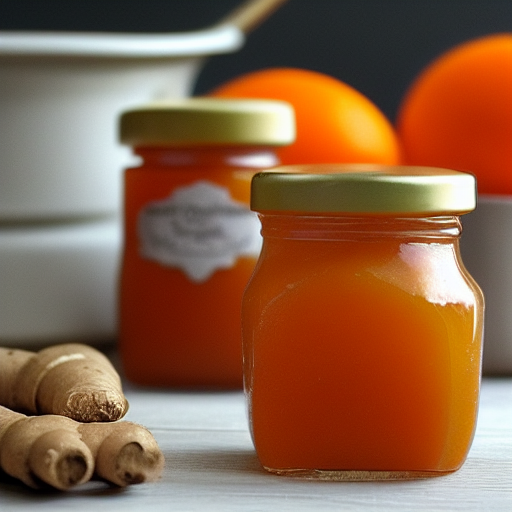
Many people assume that making marmalade is difficult, but in practice, it’s quite easy. All you need is a good recipe and some fresh oranges. With a little time and effort, you can create a delicious orange and ginger marmalade. This will add a touch of sweetness with a bitter hint to your breakfast table.
Making Orange and Ginger Marmalade
Day 1
Following this orange and ginger marmalade recipe is a two-step process that involves preparing the fruit and then boiling it to completion.
The first step is to slice the oranges and lemons thinly and remove any seeds. This is the most time-consuming part of it all. But you can do it with some music on in the background while being surrounded by a cloud of citrus aroma.
Then, the ginger is peeled and grated. The orange slices and ginger are added to a large glass bowl with the sugar. Next you add some water and the mixture is left to macerate.
Day 2
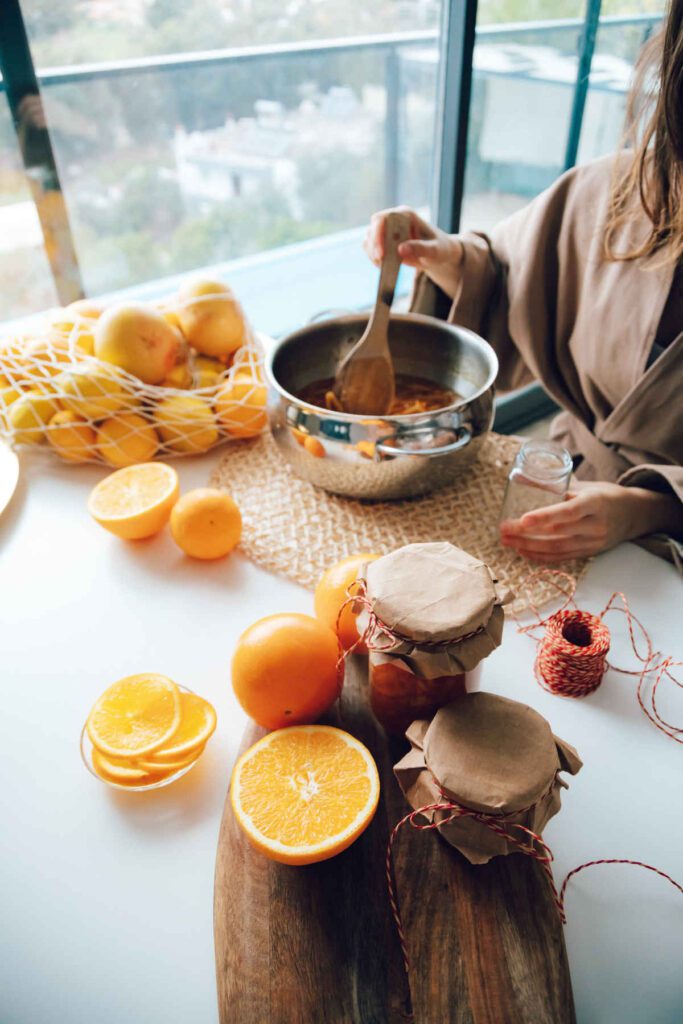
The second step is cooking the jam mixture. Empty the fruit and sugar mixture into your saucepan, with the remainder of the water added. Next, you slowly increase the heat, and stir to help the sugar dissolve. Bring the mixture to a boil and simmered for another 40-50 minutes, stirring occasionally. Check for the set of the marmalade. Finally, pour the orange and ginger marmalade into jars and seal.
TIPS for making Marmalade
Timed stirring
Always use a timer to prompt you to stir the mixture . This will ensure that the sugar and orange mix does not overcook or scorch, and stop it from boiling over.
Even slices
If the orange slices are too thick, they will not cook evenly. This can affect the overall texture of the marmalade. To avoid this, cut the oranges into thinner slices.
Relaxed making over 2-days
Some marmalade recipes can need you to boil and soften the peel in boiling water and then the sugar added. (see Lemon and Lime Marmalade Recipe). You complete the whole process in one day. Note that this recipe (my favourite) lets the ingredients macerate and soften overnight and then finished off the next day. A 2-day process, but a more relaxed one.
4. Dealing with the Peels.
- You can either just slice the oranges as described below or peel the oranges and separate the peel and flesh. You then have the option of whether you want to create a traditional marmalade with peel or a peel-free marmalade, and even how much peel you would prefer.
- Do not omit the peel completely as this is what makes it a marmalade with its distinctive flavour – even if you choose the ‘peel-free’ outcome below, the peels still feature in the cooking. Otherwise, you are just making an orange jam and just labelling it as marmalade!
- For the ‘peel-free’ version, chop up the orange and lemon flesh and add it to the glass bowl. Do add large whole pieces of orange and lemon peel to the mixture. This is important as the peel contributes a lot to the overall flavour as well as it being the source of pectin that helps the marmalade to set. Then follow the recipe removing the large peels ahead of ladling the marmalade into jars.
- If you want to select how much peel you want to have, then just slice or use kitchen scissors to cut the removed orange and lemon peel ahead of adding it to the chopped orange pulp in the bowl. (Continue with the recipe as below).
- You can also chop up the oranges and lemons and then blend them as roughly or finely as you prefer to create a very different rough chunky marmalade – that still tastes great!
- You may choose to use a combination of approaches – that is one of the main benefits of making it yourself- being able to make it just how you like it!
Crystallised ginger versus fresh ginger
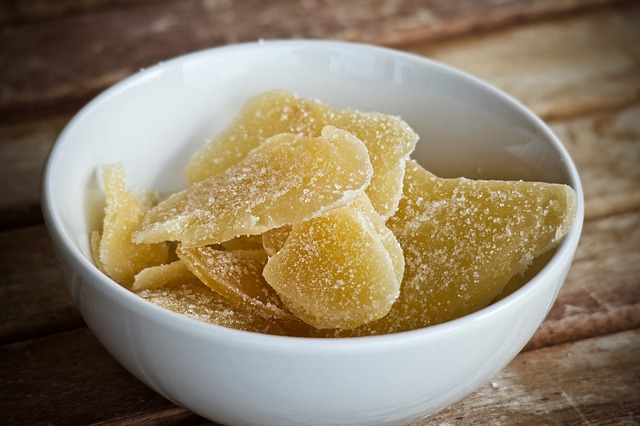
You can choose to use chopped-up pieces of crystalised ginger instead of the freshly grated ginger in the recipe. If you use crystallised ginger then you add this towards the end of the cooking process as it does not need much boiling.
Flavour options
- You can choose to omit the ginger, and just enjoy your orange marmalade, pure and simple.
- You may want to use a different type of sugar e.g. brown sugar, to add a caramel note to the marmalade. The intensity of the caramel flavour may be managed to some degree by deciding on a particular brown-to-white sugar ratio you prefer for your marmalade.
- Consider using other types of oranges e.g. blood oranges (deeper orange-red hue), clementines, tangerines, or satsumas. They all bring something individual to the preserve. Those with thinner skins need less softening, and I often just blend some of the skin with the pulp for a different texture to these options.
- Include some of your favourite alcohol (e.g. Brandy, Whiskey) – add towards the end of the boiling process.
- Use some complementary herbs (e.g. Mint, Rosemary)
- Spices (e.g. Clove, Cinnamon, Star anise) or a combination of mulled spices to give your marmalade a lovely Christmassy aroma and flavour.
Ways to enjoy your Orange and Ginger Marmalade
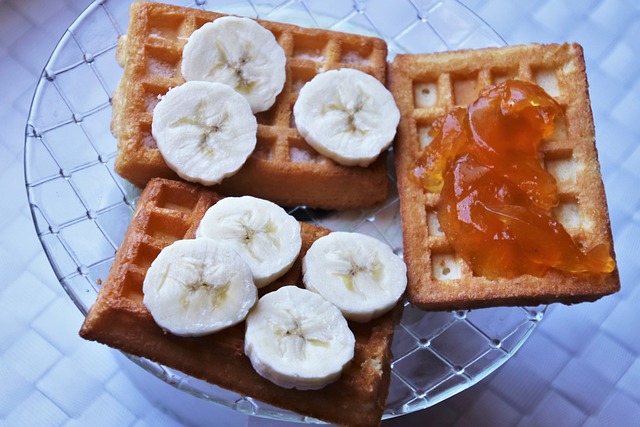
1. Spread it on toast or English muffins for a quick and easy breakfast.
2. Use it as a glaze for pork or chicken dishes.
3. Mix it with yoghurt for a delicious orange-flavoured breakfast or snack.
4. Add it to your morning oatmeal for some extra flavour and nutrition.
5. Fill up a tart shell with orange marmalade and top with whipped cream for an easy dessert.
6. Use it in place of orange juice in cocktails or mocktails.
7. Stir it into melted butter and brush it over a plain cake. Bake for a short time to realise a sweet and citrusy glaze.
This orange and ginger marmalade recipe is easy to follow, uses common ingredients, and tastes delicious. The combination of flavours is delightful and will brighten up any breakfast or snack.
Just give it a try – it might inspire you to try making marmalade with other citrus fruits too!
For more information see RESOURCES and RECIPES.
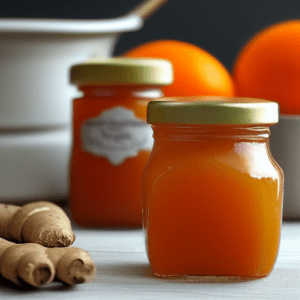
Orange and Ginger Marmalade Recipe
Equipment
- 1 Chopping board and sharp knife
- 1 Grater
- 1 Large deep aluminium saucepan
- 1 Spoon for stirring
- 1-2 small plates in the freezer
- 1 Ladle
- 1 Jam Funnel
- Clean sterilised jars with sealable lids
- Labels and pen
- Optional: Mandoline slicer, Kitchen scissors, Blender or Food processor.
Ingredients
- 4 large oranges
- 1 inch ginger
- 2 lemons
- 3 cups water
- 1.5 kg white sugar
Instructions
- Wash the oranges, lemons and ginger.
- Cut the oranges and lemons into halves or quarters. Remove and discard any seeds that you might find. Then thinly slice the fruits adding them to the saucepan, with the juices that might try to escape! If you do have a mandoline or choose to blend the fruits this can speed up this step.
- Remove the ginger skin and grate the ginger (or chop it into small pieces). Add this to the oranges in the saucepan too.
- Now you can add the water and sugar to the saucepan and stir to distribute the ingredients, especially the sugar.
- Bring the mixture to a boil and stir until the sugar is dissolved. Then take it off the heat add the lid to the saucepan and leave it to stand overnight.
- Stir a couple of times the next morning.
- Return the saucepan to the heat and bring it back up to a boil.
- Reduce the heat and allow it to simmer for 50min, stirring often.
- Prepare your jars and lids.
- Increase the heat from simmering to a medium boil for another 20min and get ready to start to test for the set of the marmalade.
- Use the plate from the freezer to test for the set, or a candy thermometer reaching a temperature of 105 degrees C. If not set yet, return to the heat for a further 5 min and test again. Repeat as needed. If it is too firm already, carefully add some water to the mixture, stir through and test for the set again.
- Once you are satisfied with the consistency (which will thicken further as the marmalade cools), take the saucepan off the heat and let the mixture stand for a few minutes.
- After one final stir, ladle the mixture into the clean, warm, sterilised jars. Wipe the rims of the jars before sealing them with their lids.
- Leave the marmalade to stand to cool completely.
- Add a label with the name and date to the jars, and store the jars in a cool, dark cupboard.The marmalade can last for up to 12 months stored as above. Keep in the fridge once opened.
Notes
TIPS for making Marmalade
1.Timed stirring
Always use a timer to prompt you to stir the mixture . This will ensure that the sugar and orange mix does not overcook or scorch, and stop it from boiling over.2.Even slices
If the orange slices are too thick, they will not cook evenly. This can affect the overall texture of the marmalade. To avoid this, cut the oranges into thinner slices.3.Relaxed making over 2-days
Some marmalade recipes can need you to boil and soften the peel in boiling water and then the sugar added. (see Lemon and Lime Marmalade Recipe). You complete the whole process in one day. Note that this recipe (my favourite) lets the ingredients macerate and soften overnight and then finished off the next day. A 2-day process, but a more relaxed one.4. Dealing with the Peels.
-
- You can either just slice the oranges as described below or peel the oranges and separate the peel and flesh. You then have the option of whether you want to create a traditional marmalade with peel or a peel-free marmalade, and even how much peel you would prefer.
-
- Do not omit the peel completely as this is what makes it a marmalade with its distinctive flavour – even if you choose the ‘peel-free’ outcome below, the peels still feature in the cooking. Otherwise, you are just making an orange jam and just labelling it as marmalade!
-
- For the ‘peel-free’ version, chop up the orange and lemon flesh and add it to the glass bowl. Do add large whole pieces of orange and lemon peel to the mixture. This is important as the peel contributes a lot to the overall flavour as well as it being the source of pectin that helps the marmalade to set. Then follow the recipe removing the large peels ahead of ladling the marmalade into jars.
-
- If you want to select how much peel you want to have, then just slice or use kitchen scissors to cut the removed orange and lemon peel ahead of adding it to the chopped orange pulp in the bowl. (Continue with the recipe as below).
-
- You can also chop up the oranges and lemons and then blend them as roughly or finely as you prefer to create a very different rough chunky marmalade – that still tastes great!
-
- You may choose to use a combination of approaches – that is one of the main benefits of making it yourself- being able to make it just how you like it!
5.Crystallised ginger versus fresh ginger
You can choose to use chopped-up pieces of crystallised ginger instead of the freshly grated ginger in the recipe. If you use crystallised ginger then you add this towards the end of the cooking process as it does not need much boiling.Flavour options
-
- You can choose to omit the ginger, and just enjoy your orange marmalade, pure and simple.
-
- You may want to use a different type of sugar e.g. brown sugar, to add a caramel note to the marmalade. The intensity of the caramel flavour may be managed to some degree by deciding on a particular brown-to-white sugar ratio you prefer for your marmalade.
-
- Consider using other types of oranges e.g. blood oranges (deeper orange-red hue), clementine’s, tangerines, or satsumas. They all bring something individual to the preserve. Those with thinner skins need less softening, and I often just blend some of the skin with the pulp for a different texture to these options.
-
- Include some of your favourite alcohol (e.g. Brandy, Whiskey) – add towards the end of the boiling process.
-
- Use some complementary herbs (e.g. Mint, Rosemary)
-
- Spices (e.g. Clove, Cinnamon, Star anise) or a combination of mulled spices to give your marmalade a lovely Christmassy aroma and flavour.
Ways to enjoy your Orange and Ginger Marmalade
1. Spread it on toast or English muffins for a quick and easy breakfast. 2. Use it as a glaze for pork or chicken dishes. 3. Mix it with yoghurt for a delicious orange-flavoured breakfast or snack. 4. Add it to your morning oatmeal for some extra flavour and nutrition. 5. Fill up a tart shell with orange marmalade and top with whipped cream for an easy dessert. 6. Use it in place of orange juice in cocktails or mocktails. 7. Stir it into melted butter and brush it over a plain cake. Bake for a short time to realise a sweet and citrusy glaze. For more information see RESOURCES and RECIPES.Nutrition
Nutritional Disclaimer
All nutritional information is an estimate only, based on third-party calculations derived from an online nutritional calculator, Spoonacular API. The data provided is a courtesy and should not be considered a guarantee or fact. Each recipe and nutritional value will vary depending on the ingredients and brands you use, your measuring methods and portion sizes. For accurate results, we recommend that you calculate the nutritional information yourself, using a preferred nutritional calculator or advice from a nutritionist, based on your ingredients and individual processes.